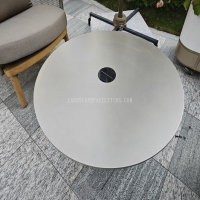Welcome to the website for landscape facilities products and knowledge.
How do the environmental impacts of landscape chair transportation vary by distribution model?
The transportation of landscape chairs, often overlooked in sustainability discussions, has significant environmental implications that vary by distribution model. Traditional centralized logistics, relying on long-haul trucking, generates higher carbon emissions due to extended travel distances and frequent transshipment. In contrast, regional distribution hubs reduce mileage by optimizing localized delivery routes, cutting fuel consumption by up to 30%.
Direct-to-consumer (DTC) e-commerce models introduce complexities: while eliminating retail storage emissions, last-mile deliveries—often via small, inefficient vehicles—can offset gains. A 2022 study found DTC emissions rose 18% when doorstep deliveries replaced bulk retail shipments.
Emerging solutions include hybrid models combining rail freight for long distances with electric vehicles for final delivery, slashing emissions by 40%. Additionally, manufacturers adopting "slow shipping" strategies consolidate orders to minimize trips, proving that operational tweaks can rival high-tech alternatives in sustainability impact.
Ultimately, the greenest model depends on geographic factors and order density, but proactive route optimization and modal shifts consistently outperform conventional approaches in reducing ecological harm.
Related search:

Recommendation
Outdoor stainless steel table with solar-powered ambient lighting feature - excellent design.